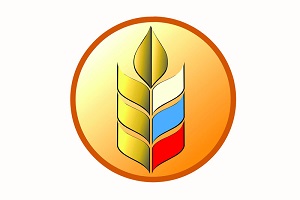Why did chicken prices rise 14% from March to July?

According to EMISS Rosstat, in June, the average retail price of chilled and frozen broiler carcasses reached 193.48 rubles per kilogram (+6.8% per month), breaking the previous historical record in April 2022 (190.85 rubles per kilogram). Chicken is still getting more expensive: on the 29th week (July 17–23), 2023, the same source recorded the figure at 196.93 rubles per kilogram.
In mid-July, the Ministry of Agriculture described the jump in prices for chicken MEAT (+14% since March) as a seasonal phenomenon. The cost of poultry farming is growing with the rise in price of soybean meal and other consumables. Profitability does not exceed 5-8%. Poultry farmers raise prices so that the operating margin allows them to work further, said Albert Davleev, president of the consulting company Agrifood Strategies. He recalled that inflation must be taken into account when analyzing prices. If it is discounted, the difference is quite understandable. The ruble significantly depreciated against world currencies.
In addition, 55 outbreaks were registered in January-June in 24 regions, which could be another reason for the shortage, although Rosstat reported a decline in production (-4% per month) only in June, and in general recorded an increase in agricultural organizations (+1.9% yoy). In May, the National Union of Meat Processors (NCM) sent a letter to the Federal Ministry of Agriculture asking for restrictions on the EXPORT of chicken meat. There was a shortage of carcasses and chicken fillets on the domestic market, primarily due to failures at poultry farms in the Belgorod region, bordering Ukraine.
As a result, selling prices increased, but their growth slowed down in July. Meanwhile, to cut costs, meatpacking plants are changing recipes and replacing poultry with pork. NSM Executive DIRECTOR Nikolay Aksyonov stated that wholesale and retail prices for chicken meat have increased, and the association suggested that the Ministry of Agriculture move on to concluding "long contracts" for the supply of meat raw materials. The meat industry is the only one in the agro-industrial complex where this tool, which promotes flexible production planning, is still not used.
Chairman of the Presidium of the Association of Retail Companies (AKORT) Igor Karavaev specified that retailers have long been selling broiler carcasses with a negative margin (more than 2% in recent months), that is, they do not fully translate the difficulties of manufacturers on the shelves, and yet the demand is noticeable exceeds the offer. Albert Davleev attributed the increase in summer demand to a decrease in outbound tourism, and the reduction in supply to a decrease in stocking density during the hot season to improve feed conversion and weight gain. This is not a conspiracy, but a necessity, the expert stressed. In addition, there is an outflow of labor at enterprises, especially from slaughter and processing sites, so instead of cutting, manufacturers are more likely to sell whole carcasses.
However, the president of Agrifood Strategies argues that exports could not be the reason for the shortage of chicken. As a rule, products that are of little demand in RUSSIA are sent abroad: mainly paws, delicacy for the Chinese, as well as drumsticks and small carcasses of broilers, which are especially valued in the Middle East. Davleev expects the rise in chicken prices to slow down in August, when there is a traditional decline in demand: a lot of fresh vegetables and fruits appear on the market, and parents prepare their children for school and save money .
Read together with it:
- Парагвай: Экспорт субпродуктов является растущей отраслью и уже достиг 95,4 млн долларов СШАЭкспорт говяжьих субпродуктов в этом году значительно вырос. К концу августа выручка составила 95,4 млн долларов США по сравнению с 54,6 млн долларов США на тот же конец прошлого года. По данным SENACSA, в конце августа этого года было экспортировано 51 миллион килограммов мяса по сравнению с 33,7 миллиона килограммов на конец того же месяца прошлого года. Экспорт субпродуктов увеличился на 51,3%....
- Новые горизонты сотрудничества: Россия и Аргентина обсуждают совместный доступ на рынки продукции животного происхожденияОдной из ключевых тем конференции стал контроль за производством ветеринарных препаратов в Аргентине. Аргентинская сторона представила свою систему контроля, включающую Управление ветеринарных продуктов и Управление лабораторий животных. Эти организации обеспечивают высокие стандарты безопасности, так как каждая производственная единица подвергается проверкам каждые 3-5 лет и зарегистрирована в ин...
- Indilight held a culinary masterclass with Silvena Rowe, promoting turkey as a healthy food.Silvena Rowe demonstrated original turkey cooking techniques, emphasizing its nutritional value. Participants prepared crispy turkey schnitzel with an almond-herb crust and turkey with turmeric and lime. The masterclass also emphasized a scientific approach to nutrition and promoted turkey as an ideal food for a healthy lifestyle. During the event, guests received unique gifts from the Louis Quart...
- С января по июль экспорт свинины из ЕС вырос на 1,6%На втором месте оказались Нидерланды с объёмом экспорта в 392 000 тонн. Дания экспортировала свинину в третьи страны с объёмом в 308 000 тонн, что примерно на 13% меньше, чем в предыдущем году. Германия экспортировала 180 000 тонн, что на 18% меньше, чем годом ранее. Это было обусловлено, главным образом, дополнительными ограничениями на экспорт, вызванными вспышкой ящура в начале года. Помимо зап...
- Московская область планирует нарастить мясное производство на 25% к 2030 годуВ Московской области более 100 предприятий уже выпускают около 305,000 тонн мяса, из которых значительная доля поступает от 19 ведущих производителей свинины и мяса птицы. Также в регионе реализуются два новых инвестиционных проекта: в Можайске строится утиная ферма на 125,000 птиц, а в Ступино — овцеводческое хозяйство на 11......




























































